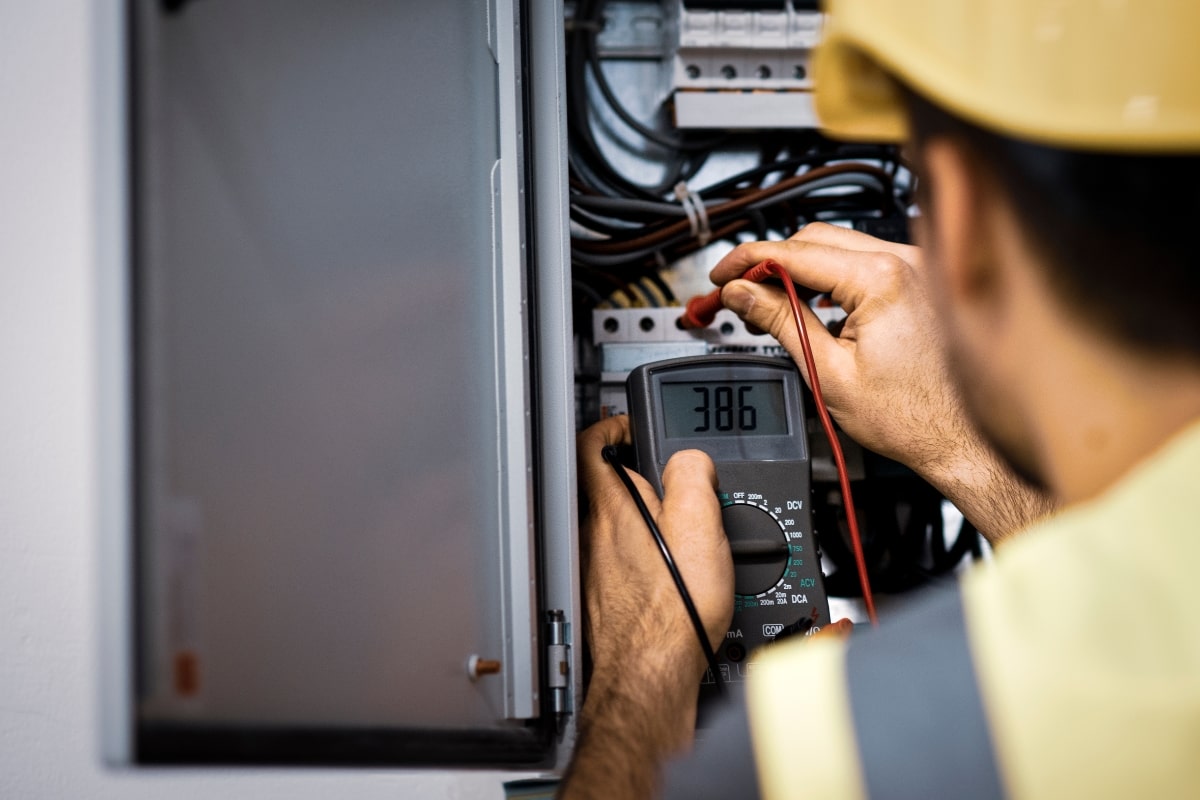If you’re moving into a new home, or if you’re planning to remodel an older home, understanding your home’s electrical load is an important step in choosing the appropriate appliances and equipment.
What is Electrical Load Capacity?
So why is your electrical load calculation important? It represents the total amount of power supplied to your home. This is used by all of your home’s electrical circuits, including outlets, appliances, and light fixtures.
Once you’ve calculated your current electrical service, you can better plan and manage the distribution of electricity throughout your home. For older homes that need new or upgraded electrical services, a qualified electrician can help you with the installation.
How to Calculate Electrical Load
How to calculate electrical load in a house isn’t always easy. Checking the number of watts (W) used by every single appliance and device will get you the most accurate electrical load, but it isn’t always easy or convenient to do so.
For an at-home calculation, it’s best to keep an 80% margin of error (that is, keeping the electrical power used at least 20% below the maximum load capacity of the main circuit).
First, here a few formulas to help you understand the relationship between the terms we’ll be using:
- Amp = Watts / Volts
- Volts x amps = watts
For example, if you have a 100-amp service with a 240 volts circuit, then your capacity is 24,000 watts.
So how many amps do you need for your electric car charger, furnace, central AC and other household appliances?
You can calculate how many amps your home needs with the following steps:
| Step | Example |
| Calculate the wattage of your lighting circuits by taking the square footage of your home and multipling by 3 watts. | 1800 square feet x 3 = 5400 watts |
| Add the wattage rating for all plug-in outlet circuits | 15 outlets x 2760 watts = 41400 watts
5400 + 41400 = 46800 watts |
| Add the wattage of all permanent appliances such as a water heater, range/oven, window air conditioner, refrigerator, etc. | Water heater: 5000 watts
Dishwasher: 1200 watts Fridge: 300 watts Total: 6500 watts 46800 + 6500 = 53300 watts |
| Subtract 10000 from the sum of these | 53300 – 10000 = 43300 watts |
| Multiply by 0.40 (40%) | 43300 x 0.40 = 17320 watts |
| Add 10000 back to this number | 17320 + 10000 = 27320 watts |
| Add the wattage of your heating or cooling appliances, whichever is greater. Don’t add both, because you won’t be using them at the same time. | AC: 4000 watts
27320 + 4000 = 31320 watts |
| Divide by 240 (or whichever voltage your home uses) to get the humber of amps, and this number will be your load calculation | 31320 / 240 = 130.5 suggested amperage |
Why is Electrical Load Important?
Simply put, your home’s electrical load capacity is the total amount of current that your electrical wiring can handle. If the amount of power being drawn from all of its appliances and electrical equipment is greater than what its wires can handle, you may experience blackouts and frequent trips to the circuit breaker panel.
Different homes have different electrical loads, and so need different amperage. A small home with no central air will probably not need more than a 100-amp service, whereas a larger home with central heating and many devices and appliances will probably need a 200-amp service.
If you’re noticing frequent blackouts, flickering lights, or appliances not working as they should, it might be time to replace your electrical panel.
Why You Should Upgrade Your Electrical Panel
A service panel with too many circuits can be dangerous, so it’s best to contact a qualified electrician before you start adding in new circuits. They’ll be able to determine the minimum panel amperage required for significant electrical additions, and tell you if you should upgrade your electrical panel.
Your electrical load box size will determine your home electrical capacity. Generally, these come in three sizes:
- Small fuse box (60 amps): sometimes found in older homes with original wiring, these fuse boxes are small enough to fit an electrical panel outside of your home. This type of panel is likely inadequate for a home of 1200 square feet or more, as it can only supply power to one 240-volt appliance.
- Medium service panel (100 amps): Most modern homes require a minimum of 100 amps—this is also the minimum required by the National Electrical Code (NEC) / Canadian Electrical Code (CEC). If you plan on doing a major renovation or adding large appliances, you might need to upgrade your electric panel.
- Large service panel (150-200 amps): This type of service will be needed in a larger home that uses lots of electrical appliances, including heating and air conditioning equipment, hot tubs, or home theatre systems.
Your home might also be installed with an electrical panel that is known to put you at risk of a fire. We urge you to have them replaced without delay.
If you’ve decided you need an upgrade to your electrical panel, talk to one of our qualified electrician.
Sun Electrical Ltd. — Electricians Who Care
When it comes to your home’s electrical load calculation, installing new electrical service, or making other significant electrical additions, choose licensed electricians who care about you and your home’s safety. Reach out to us and we’ll assess your needs and provide a quote.





